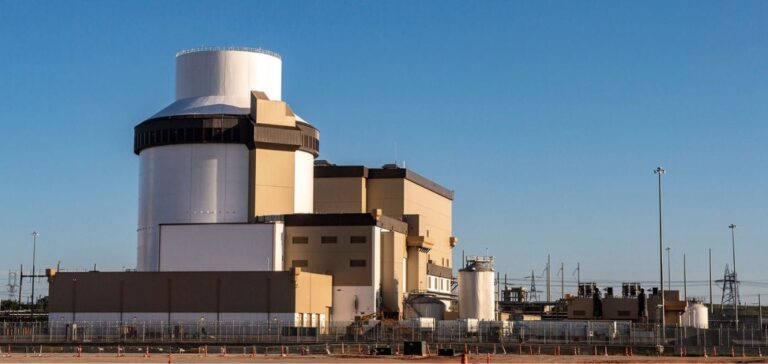China continues its nuclear expansion program with the approval of four AP1000 reactors from Westinghouse Electric Company, to be installed at two separate sites: Bailong in the Zhuang autonomous region of Guangxi and Lufeng in Guangdong province.
These projects, led respectively by State Power Investment Corporation (SPIC) and China General Nuclear Power Group (CGN), aim to diversify the energy mix while integrating Generation III+ reactors.
Two new reactors for the Bailong project
The Bailong site, under the aegis of SPIC, will house two AP1000 reactors.
The technology is based on passive safety systems, designed to operate without human intervention in the event of an emergency, in line with China’s stringent nuclear safety requirements.
The construction budget for these reactors is estimated at around CNY 40 billion (USD 5.6 billion).
This project potentially includes the addition of four further AP1000 reactors in the future, strengthening Westinghouse’s presence in China, although local competitors such as CNNC are also advancing their own technologies.
Lufeng: A key project for CGN
At Lufeng, managed by CGN, the other two AP1000 reactors have also been given the green light.
Site preparation work, including the “First Concrete Day” for the foundations of the nuclear island, is already underway.
The decision to integrate AP1000s is part of a wider strategy to use a combination of foreign and local reactors to meet the growing demand for low-carbon electricity.
Domestically-designed Hualong One reactors continue to be deployed in parallel, illustrating a balanced approach to technological diversification.
Energy strategy and industrial implications
The approval of these reactors comes at a time when China is stepping up its nuclear development program, seeking to increase installed capacity while reducing the use of coal.
China currently has 56 reactors in operation and a further 30 under construction, positioning it as a leader in terms of new nuclear capacity.
The adoption of technologies such as the AP1000 also demonstrates a willingness to incorporate international safety standards, while promoting local innovations such as the CAP1000 and the Hualong One.
Market impact and outlook for Westinghouse
For Westinghouse, this approval strengthens its position in the Chinese nuclear sector, a strategic growth market.
The AP1000s, already in operation in China and the USA, are demonstrating robust performance in terms of availability and safety.
However, the Chinese market remains highly competitive, with local players such as CNNC and CGN continuing to promote indigenous reactor designs to reduce dependence on imported technologies.
China’s recent decision could influence other emerging markets considering upgrading their nuclear fleets.






















